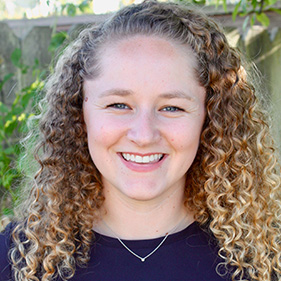Estimated 6.5 million Californians know someone at risk of harming themselves, others
Study highlights opportunities for people to prevent violence within their social networks
One in five adults in California, or an estimated 6.5 million people, are concerned that someone they know, usually a friend or family member, is at risk of harming themselves or others, according to new research published in Preventive Medicine.
Alcohol and substance misuse, a history of violence, and firearm access were common reasons for concerns about potential violence.
Of the people perceived to be at risk for harming others, an estimated 19% were said to have access to firearms. For those perceived to be at risk of harming themselves, that number was approximately 11%.
Amanda J. Aubel, a research data analyst at the UC Davis Violence Prevention Research Program (VPRP) and lead author of the study, notes those numbers are likely underestimates.
“Many respondents didn't know whether the person had access to firearms. Nonetheless, our results suggest that firearm access is far too common among individuals at perceived risk of violence,” Aubel said.
The data for the new study come from the 2020 California Safety and Wellbeing Survey, which is designed to represent the state’s general adult population. The 2,870 adult respondents, who answered a series of questions about exposure to violence, were California residents 18 years of age or older. The research firm Ipsos conducted the online survey in July 2020.
A growing need for violence prevention
Violence is a leading cause of death and injury in the United States. In 2020, approximately 24,500 people died from homicide, and 46,000 died from suicide. More than three-quarters of the homicides and half of the suicides involved firearms, according to the Centers for Disease Control and Prevention. Guns are now the leading cause of death for children and teens in the U.S.
In 2019-2020, the U.S. firearm homicide rate increased by nearly 35%, and the firearm suicide rate remained high.
To find out how widespread the perceived risk of violence is, researchers asked the participants, “Are you concerned that anyone you know might physically hurt” (1) another person and (2) themselves on purpose? Survey results showed that:
- 12% knew at least one person they thought was at risk of hurting others
- 13% knew at least one person they thought was at risk of hurting themselves
About one-quarter of respondents with these concerns thought the person was likely or very likely to harm others (27%) or themselves (22%) within the following year.
People often recognize warning signs or increased risk before a mass shooting, suicide or other act of violence, but they don't always know what to do, or they think it's not their place to intervene. We need to shift that way of thinking and realize that everyone can play a role in preventing violence, especially among our friends, family, co-workers, and others within our social networks."—Amanda J. Aubel, research data analyst, UC Davis Violence Prevention Research Program
Actions to reduce the risk of violence
The survey showed that 85% of the survey respondents who knew someone at perceived risk of harming themselves took one or more actions to reduce the risk of the person hurting themselves. Actions included talking with the person about the risk, providing resources, and asking family, friends or a mental health professional for help.
Of those concerned someone they knew was at risk of harming others, 67% took at least one action to reduce their own risk of being hurt by the person. This included ending their relationship with the person and asking for help from friends, family, or a mental health professional.
Few respondents (less than 20%) reduced the person’s access to drugs or alcohol, and even fewer (less than 5%) reduced the person’s access to guns.
Reasons survey respondents said they did not take action included:
- The dangerous situation did not seem likely
- It seemed like a personal matter
- They did not think their actions would help
- They thought their actions might make the situation worse
"People often recognize warning signs or increased risk before a mass shooting, suicide or other act of violence, but they don't always know what to do, or they think it's not their place to intervene,” Aubel said. “We need to shift that way of thinking and realize that everyone can play a role in preventing violence, especially among our friends, family, co-workers, and others within our social networks."
Limitations of the study
The researchers noted several limitations of the study. Only adults were surveyed, and the data reflect the respondents’ subjective knowledge of people they perceived to be at risk for violence.
Although many survey participants were concerned about more than one person, the study asked respondents to describe only the one person they knew best. California is also unique in several ways, including its relatively low rates of gun ownership and suicide compared to other states.
"Our findings suggest a need for continued resources and community investment in systems of support that empower the public, especially those close to people who may be at elevated risk for violence, with culturally responsive tools and services to effectively intervene before violence occurs,” said Nicole Kravitz-Wirtz, senior author of the study and an assistant professor with VPRP.
Examples of these tools and services include lethal means counseling and extreme risk protection orders, known as gun violence restraining orders in California.
Additional authors on the paper include Garen Wintemute of the UC Davis Violence Prevention Research Program and California Firearm Violence Research Center.
Funding for the research was supported by the California Firearm Violence Research Center at UC Davis, with funds from the State of California; the California Wellness Foundation (Award No. 2017–0447); and the Heising-Simons Foundation (Award No. 2019–1728).
Resources
The UC Davis Violence Prevention Research Program (VPRP) is a multi-disciplinary program of research and policy development focused on the causes, consequences and prevention of violence. Studies assess firearm violence, the social conditions that underlie violence, and the connections between violence, substance abuse and mental illness. VPRP is home to the University of California Firearm Violence Research Center, which launched in 2017 with a $5 million appropriation from the state of California to conduct leading-edge research on firearm violence and its prevention. For more information, visit health.ucdavis.edu/vprp/.






